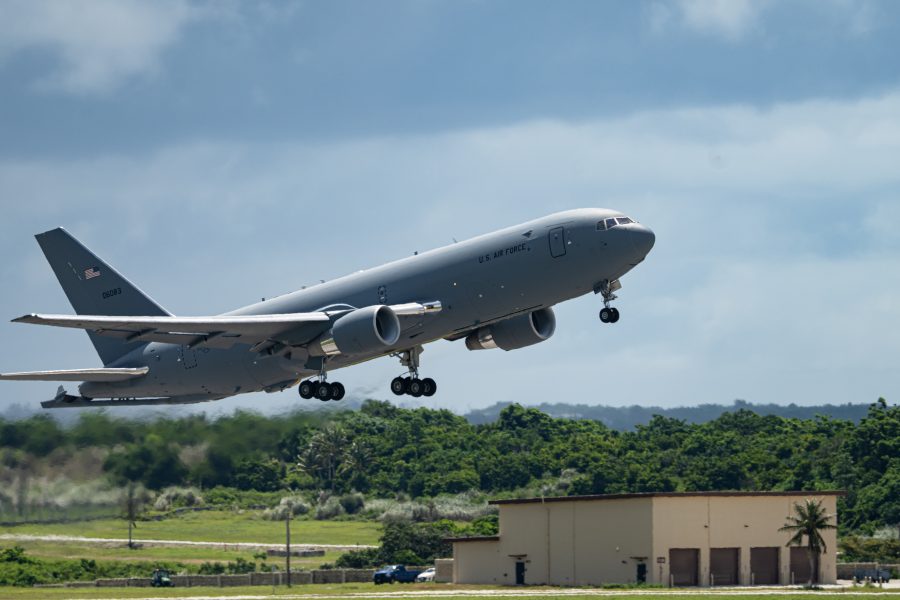The Air Force will buy up to 75 more KC-46 aerial refuelers to recapitalize its KC-135 fleet, opting not to conduct a competition for the next phase of its tanker purchases.
“The Air Force approved an acquisition strategy to extend KC-46A production by up to 75 aircraft,” a service spokesperson told Air & Space Forces Magazine. “This ‘KC-46A Production Extension’ program will maintain uninterrupted tanker recapitalization after final delivery under the current contract.”
Defense One first reported the decision.
The move to boost the KC-46 fleet had been looking more and more likely in recent weeks. The Air Force’s 2026 budget request stated that the “Tanker Production Extension” program would use the KC-46A Capability Production Document for its requirements, giving it a leg up on any potential competition. The service also outlined extensive plans to improve the KC-46 moving forward.
Budget documents stated that the acquisition strategy for the Production Extension program, intended to ensure the continuous manufacturing of a tanker to replace the aging KC-135, would be approved this fiscal year. Chief of Staff Gen. David W. Allvin revealed that finalized strategy at the Royal International Air Tattoo in the United Kingdom.
The original KC-46 program of record for 179 aircraft is nearly complete—the planned purchase of 15 new planes in fiscal 2026 would leave just 10 more to be put on contract—but the spokesperson said the program “was increased to 188 aircraft, the maximum available under the current contract.”
Over the years, the Air Force used various names to describe its plans to follow the original KC-46 program: KC-Y, Bridge Tanker, and KC-135 Recapitalization. Simply buying more KC-46s was always an option, but airframe builders Airbus and Embraer each pitched alternatives. At different points, Lockheed Martin partnered with Airbus and L3Harris with Embraer, but both eventually dropped out.
The decision to stick with the KC-46 comes despite years of struggles for the tanker and its maker, Boeing. The Air Force and Boeing are still working to revise the aircraft’s Remote Vision System for boom operators after the initial version had visibility issues, and the boom telescoping actuator is still being redesigned after it was found to cause the boom to become “stiff” and prevent it from refueling aircraft with lower thrust.
The Pegasus has also had issues with leaks in its fuel system, cracks on some airframes, and quality issues with its auxiliary power unit’s drain mast. Deliveries have been paused multiple times.
Still, officials have voiced support for the program, saying the Air Force and Boeing have made progress in recent years. The KC-46 was cleared for worldwide deployments in September 2022 and had its first ever operational deployment to the Middle East in October 2024. And the KC-46s refueled aircraft during the Operation Midnight Hammer airstrikes against Iran’s nuclear facilities last month.
The need for more new tankers is strong—the Air Force recently retired the last of its KC-10 Extenders and its Eisenhower-era KC-135 Stratotankers are showing their age. Meanwhile, plans for a possibly stealthy Next-Generation Air Refueling System, or NGAS, appear to be slowing, with the 2026 budget only including funding for market research and modeling and simulation.
“Next Generation Air-refueling System analysis is ongoing as the Air Force seeks to address legacy and future tanker fleet survivability overall,” the spokeperson said.


